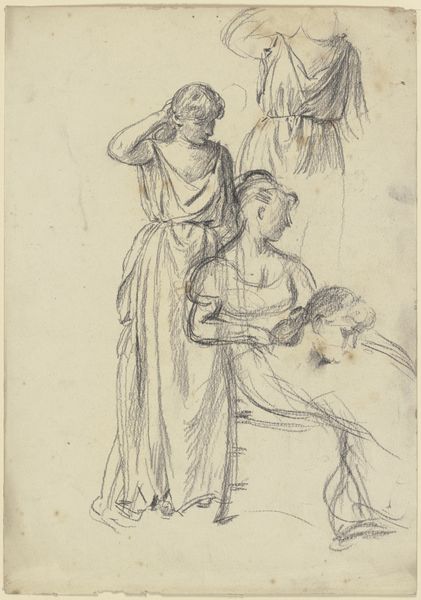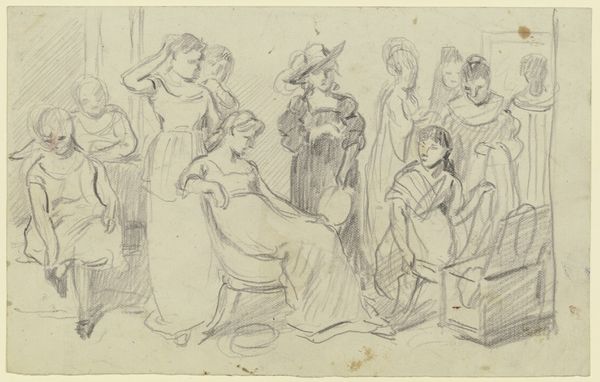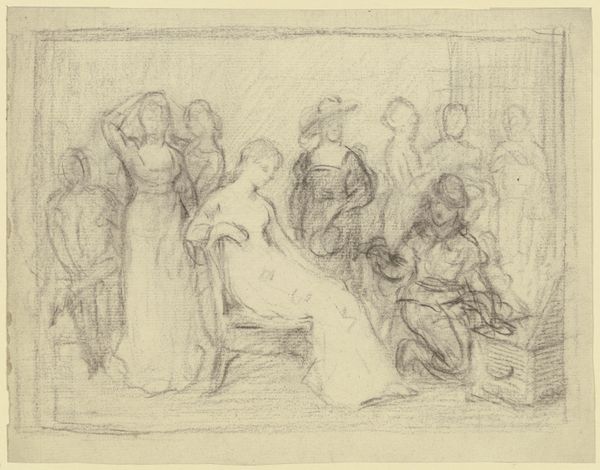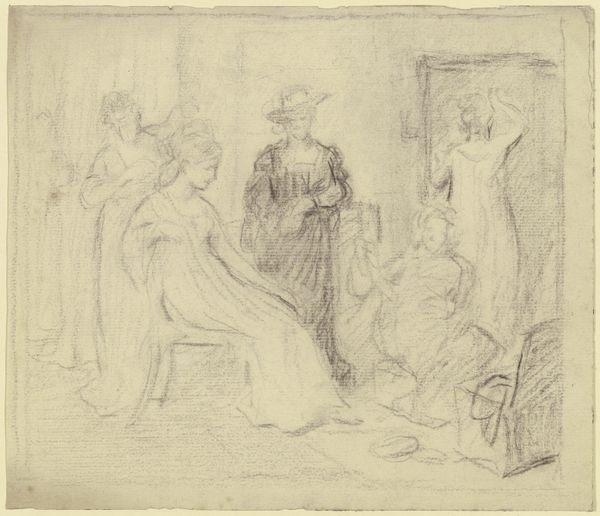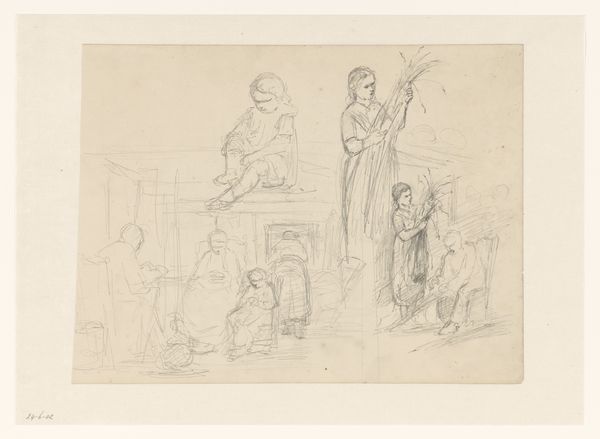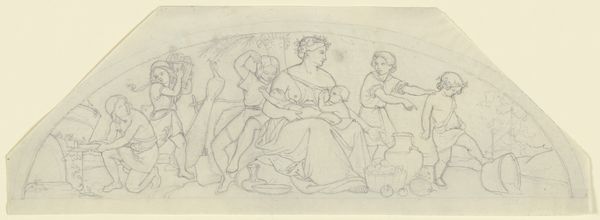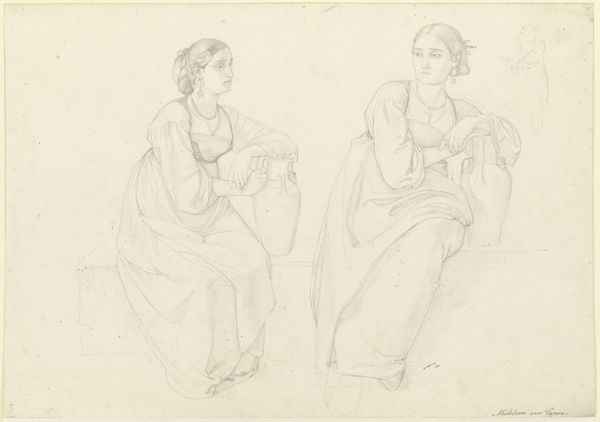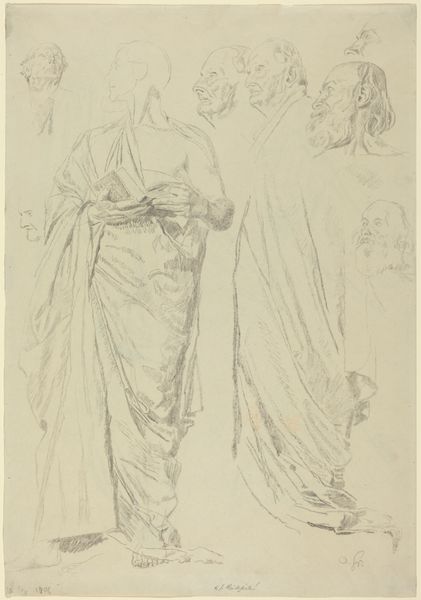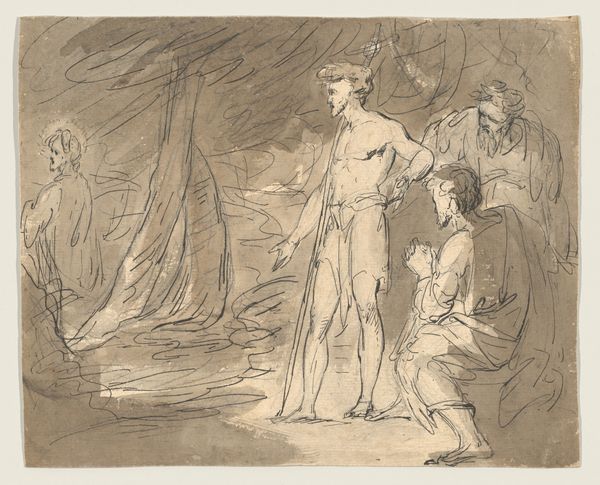
Sitzende und Stehende aus der _Vorbereitung zum Kostümball_ c. 1879 - 1880
0:00
0:00
drawing, paper, pencil
#
portrait
#
drawing
#
impressionism
#
pencil sketch
#
paper
#
personal sketchbook
#
german
#
sketch
#
pencil
#
genre-painting
#
academic-art
Copyright: Public Domain
Curator: This captivating sketch by Otto Scholderer, dating from around 1879-1880, is titled "Sitzende und Stehende aus der _Vorbereitung zum Kostümball_", or "Sitting and Standing from the Preparation for the Costume Ball." It's rendered in pencil on paper. Editor: There's a nervous energy in the piece; the hasty strokes lend it the immediacy of a candid snapshot despite it depicting a somewhat traditional scene. It feels more backstage than ballroom. Curator: Precisely! Scholderer, a German artist known for genre paintings and portraits, offers us a glimpse into the private preparations leading up to a public spectacle. Considering it’s from his personal sketchbook, that would likely be the intention. It demonstrates academic artistic practices mingling with impressions captured rapidly. Editor: Looking at the materiality, the paper and pencil provide such directness; we witness the artist’s hand and the very build-up of the scene. Notice the varying pressure applied to the pencil creates a range of values, adding volume. This hints at how artistic skill, tools, and cheap material combine to convey these people's pre-ball anxiety. Curator: And what does it say about the ball itself? Costume balls were very popular in late 19th-century European high society. This work serves as an insight into social rituals, highlighting the amount of labor, particularly for women, needed for maintaining their image. It's fascinating how the Staedel Museum preserves these kinds of "behind the scenes" images, contrasting traditional exhibitions celebrating spectacle. Editor: Exactly. The context is fascinating, as the sketchbook itself, along with Scholderer's careful control of such humble material, pushes the boundaries between "high" and "low" art forms. Curator: A fitting addition, wouldn’t you say? The choice of putting working drawings like this on display contributes to reshaping ideas about the role of art within broader social discussions. Editor: It’s a smart move, it creates space for a much more democratic form of art history. I came in with a general appreciation for Impressionism's capture of mood and walked out with a broader interest in art's societal functions and impact. Curator: And that, hopefully, is precisely what the visitors will experience as well.
Comments
No comments
Be the first to comment and join the conversation on the ultimate creative platform.
